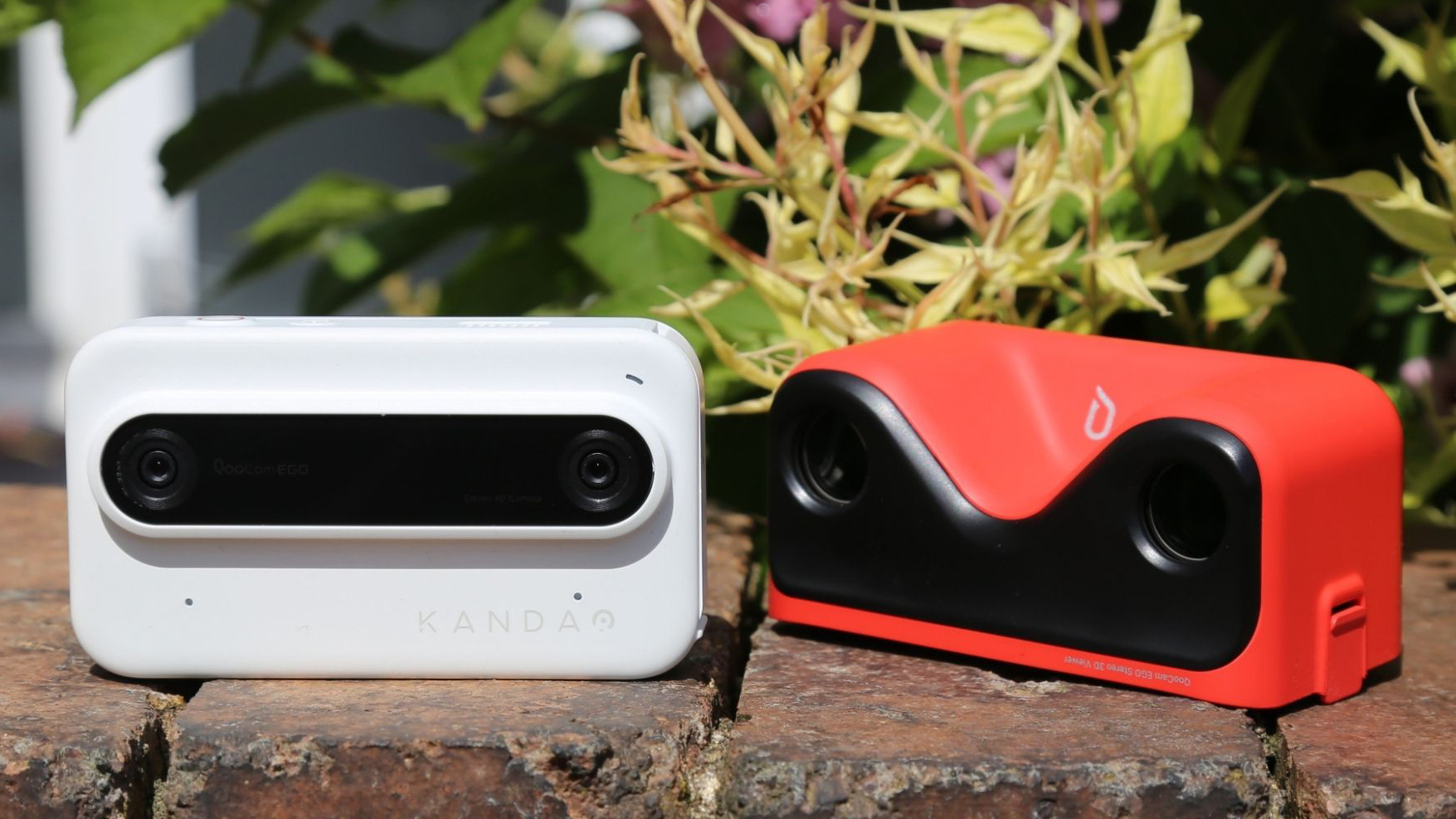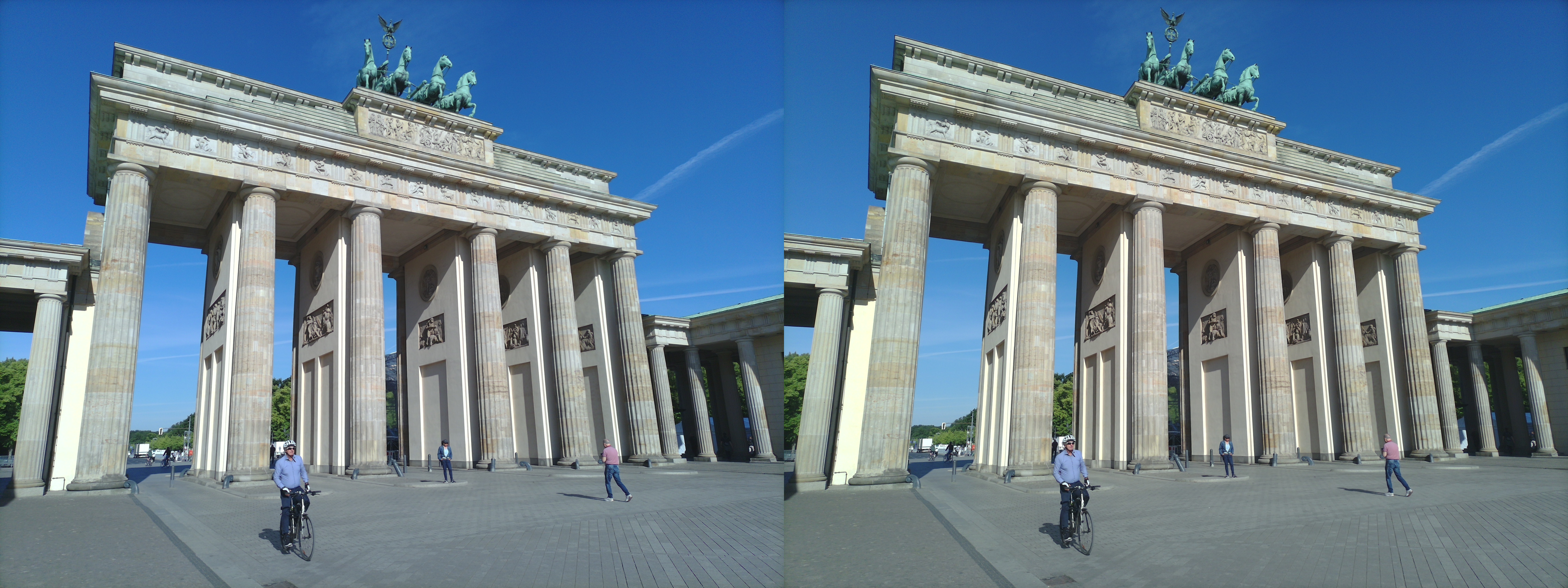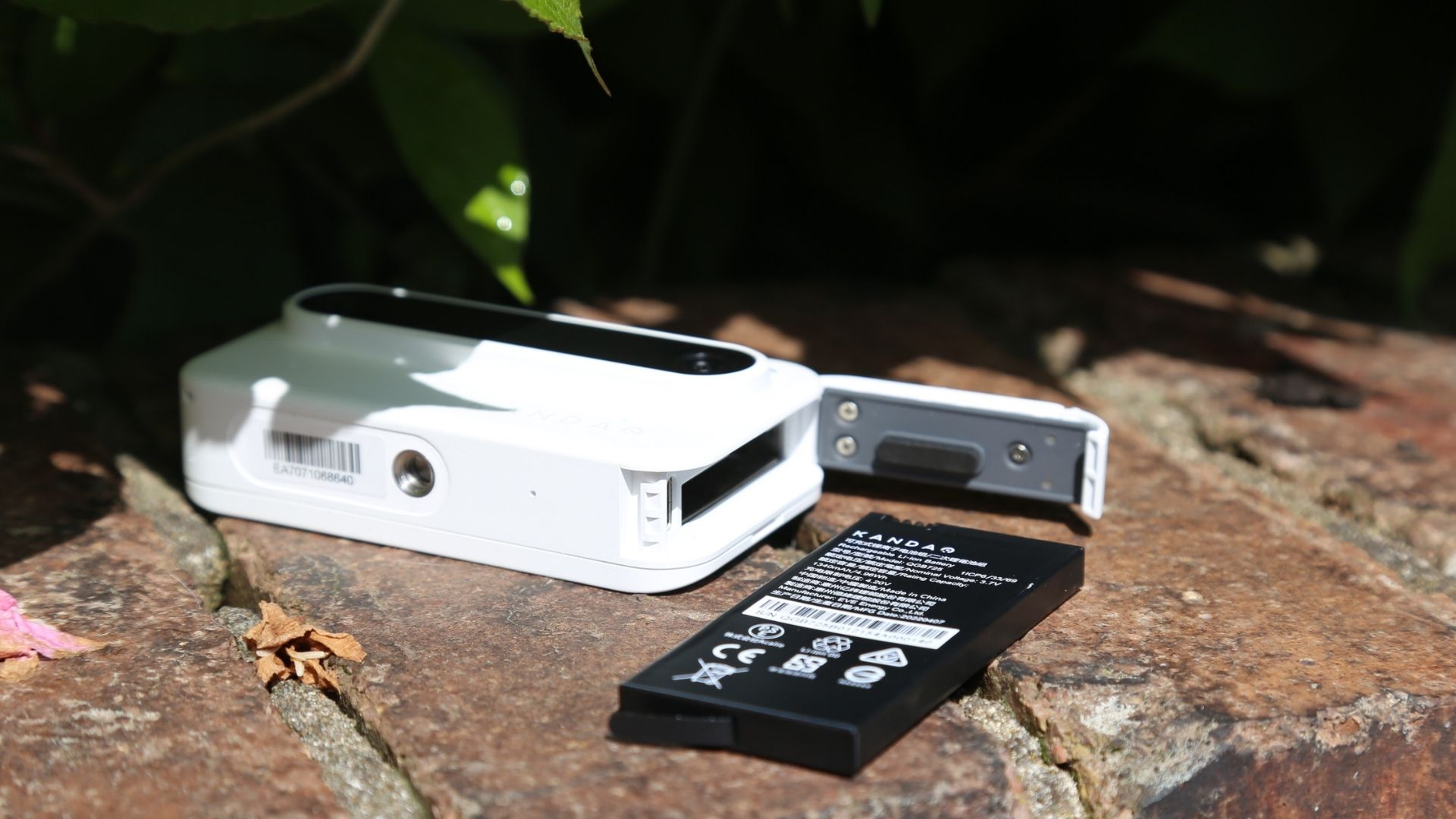I used this bizarre compact camera to shoot 3D videos for my Oculus Quest 2
This unique 3D camera is a fun ride for early adopters

Why does your phone only use one lens at a time to capture the world when your head uses two? Humans see the world stereoscopically, with two eyes each getting a slightly different view. It allows us to sense depth. So… 3D TVs? Yes, they went nowhere, but 3D cinema remains. Is there still enthusiasm for 3D content? If there is, then it’s surely virtual reality headsets like the Oculus Quest 2 (or Meta Quest 2, as it's unfortunately now known) that will be the medium.
VR is definitely one of the target markets for KanDao – makers of the QooCam 8K 360-degree camera a few years ago – whose new black or white QooCam Ego 3D camera films in 3D. It’s a bit of a one-off. About the size of a retro smartphone that's easy to shove in a shirt pocket, it’s got two f/1.8 lenses positioned either side that each has a 66-degree field of view.



It shoots 3D images as JPEGs and 3D movies as H.264 MP4 files. What makes it especially impressive is the detail it offers. Photos are relatively high resolution 8000x3000 pixels – so about 24MP – while videos measure 3840x1080, so half-4K quality in portrait aspect ratio and at 60 frames per seconds. It’s all recorded onto a microSD card of up to 256GB (there is no onboard storage) and there’s a 2.54-inch touchscreen that’s very responsive.
While it isn't exactly aiming to gatecrash our guide to the best compact cameras, it is arguably one of the most unique and interesting options around – particularly if you're looking to shoot some immersive video to send to distant relations. Should you buy it? That depends how much of an early adopter you are...
Slow coach
After using the QooCam Ego 3D for a week or so I took it to Berlin. I discovered that using it isn’t quite as easy as it looks.
I thought we’d entered an era of super-fast gadgets that don’t overheat, but not so with the QooCam Ego 3D. It’s slow. So very slow. Switching it on means a wait of about 20 seconds before it’s ready to use. Toggling between 3D video and 3D photo takes about four seconds, so if you want to capture a special moment you’ll need to be ready well ahead of time.









A 3D camera is always going to produce the most impactful content when capturing things relatively close to it. That’s where two-eyed humans see the most depth, so it’s the same for the QooCam Ego 3D. Besides, the lenses are helpfully very narrow-angle, so filming or photographing an entire room is very difficult.
Sign up for breaking news, reviews, opinion, top tech deals, and more.



The QooCam Ego 3D is best used for close-ups of objects and people, and not for scene-setters. Despite its two lenses being fixed focus there are six choices for depth – expressed in centimeters – that I had to choose between before taking a 3D photo or video. It proved a painstaking task, with constant changes required to avoid the 3D content looking blurry just where it matters.
It’s also a different set of parameters for either format; 5m depth for photos and 2m depth for video. In practice, the best way to shoot is to plan a shot, adjust the focus, then check the sharpness and 3D effect in your video by attaching a special viewer and watching it over. It’s all a bit of a faff, but some of my videos were really immersive.
VR, but not as you know it
Right now, there are limited ways to consume 3D content shot on the QooCam Ego 3D. It ships with a red viewer that magnetically clips over the touchscreen. This gave me an instant way to enjoy my 3D content, and in 37 pixels per degree (PPD).
That’s actually more than the 20-or-so PPD of an Oculus Quest 2, a VR headset being the second most obvious way of viewing 3D content. After capturing a range of content I dragged and dropped them onto an Oculus Quest 2 and watched them using the Bigscreen app’s 3D mode.


It’s VR, but not as you know it. Unlike the head-tracking that’s arguably the selling point of VR headsets in terms of immersiveness, with 3D you’re stuck with a static image… but with another dimension. So you see depth, but only within a fixed-frame format. After all, it’s not a 360-degree camera.
I enjoyed watching some of Berlin through the Oculus Quest 2. There’s just enough resolution to impress, though there are some issues. The biggest is depth, with closer objects looking far more 3D than anything in the middle distance.
Critically, the QooCam Ego 3D is endowed only with electronic image stabilization, which is a way of saying that, no, it doesn’t have anything like the kind of effect you’ll find on a GoPro (HyperSmooth) or an Insta360 (FlowState) camera. The result is that everything looks rather wobbly even if you use a selfie stick.
This has ramifications that make the QooCam Ego 3D seem a bit first-gen. No doubt about it – filming 3D video using this camera requires it to be mounted on a gimbal if it’s to be watchable.
There’s a standard tripod thread on the bottom, so it’s easily possible to mount it on a gimbal for video and a tripod for vlogging. For the latter it’s got self-timer options, but make sure you set the focus distance and don’t move forward or back during filming.
So is it any good?
My first impressions of the QooCam Ego 3D were pretty good, thanks to it being easy to use and generally likable. Sure, getting content on and off is a touch DIY, but side-loading to a VR headset and/or uploading to YouTube is relatively simple… if you have a computer and a microSD card reader.
Of course, the life of its 1,340mAh battery is short. Even the best action cameras and the best 360 cameras that are about the same physical size rarely manage more than an hour and the QooCam Ego 3D is no different. I found that I needed to think through exactly what I wanted to film not only in terms of depth measurements, but in their perceived 3D value because the percentage indicator for battery life remaining visibly counts down as you film.
I reckon I got about 40 minutes out of the QooCam Ego 3D. In whatever weather it’s used, the camera gets noticeably warm in the hand, bordering on hot. When I tried to use it in 28C/82F heat it informed me that it was overheating and would switch itself off. It took about 30 minutes to cool down enough to be used again.
Overall, I enjoyed using the QooCam Ego 3D, but as a piece of hardware it needs improving. The software, too, is frustratingly slow despite being easy to use. After using it around Berlin for a week I came to the conclusion that there is a place for the QooCam Ego 3D, but it badly needs six things – more processing power, a longer battery life, a 3D autofocus mode, effective image stabilization tech, a better way of linking to its app, and wider-angle lenses.
All that said, the QooCam Ego 3D is for now one of the easiest ways to capture 3D content for viewing either on its own viewer or on a VR headset like the Oculus Quest. You just need to plan carefully and prepare to wade deep into the depths.

Jamie is a freelance tech, travel and space journalist based in the UK. He’s been writing regularly for Techradar since it was launched in 2008 and also writes regularly for Forbes, The Telegraph, the South China Morning Post, Sky & Telescope and the Sky At Night magazine as well as other Future titles T3, Digital Camera World, All About Space and Space.com. He also edits two of his own websites, TravGear.com and WhenIsTheNextEclipse.com that reflect his obsession with travel gear and solar eclipse travel. He is the author of A Stargazing Program For Beginners (Springer, 2015),